Not all disabilities are visible

You may have heard the terms invisible illnesses and hidden disabilities. But if you don’t have one yourself, I wouldn’t blame you if you didn’t think about it very often. I didn’t either until I was diagnosed with one that affected my mobility. This post is to raise awareness and offer resources.
An invisible illness is any physical, mental, or neurological condition that limits or challenges a person’s life but is not immediately apparent to others.
People with invisible illnesses often appear healthy, even when they are experiencing severe chronic pain, extreme fatigue, cognitive difficulties, or other debilitating symptoms that significantly impact their daily lives.
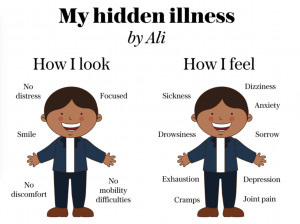
Click here to read Ali’s story “But you don’t look sick!” on the Cambrige Children’s Hospital website, and to view the hi-res image.
Types of invisible illnesses
There are way too many types of invisible illnesses to list them all. A few that affect people I know personally are diabetes, autism, Crohn’s disease, POTS, kidney disease, multiple sclerosis, fibromyalgia, long COVID, and several forms of cancer. Some of these conditions start out invisible and become more apparent as they progress.
Many invisible illnesses affect mobility, but not always to the extent that an extremely visible wheelchair (or other mobility aid) is required. Most involve chronic pain and fatigue.
Multiple conditions
I hate the term comorbidities. It sounds so…well, morbid! And it wasn’t until COVID, when the term was used a lot to identify high-risk individuals, that I realized I have several of them. I’m not going to list all of mine, but when you look at me what do you see? I’m fat, I’m older, and I’m a woman. This is not a recipe for being taken seriously in society or by medical professionals. If you don’t agree with me, you’re probably not a fat, older woman!
OMG, I wasn’t planning to elaborate, but I just saw this video (2:35 min.) and had to include it: Katie Couric interviews Dr. Mary Claire Haver on how being told to look out for “Whiny Women” shaped her career.
When invisible isn’t exactly invisible
Obese people are obviously, visibly, fat. It’s easy to assume they are just lazy and eat too much food. But they can also have multiple other things going on with them that are “invisible”. They can have illnesses (or medications) that contribute to their obesity, and they can have illnesses in addition to being obese.
Fat can be classified in several different ways. For purposes of this post, I have TWO types of visible fat. One type is responsive to diet and exercise, but the other one is not. The fat disease I have — besides obesity — is called lipedema. If you’ve never heard of it, well, neither had I until a year or so ago. If I’d known about it, I could have asked about it by name and shortened the diagnostic period from several years to several weeks (or months, considering how challenging it is to get an appointment around here).
I did point out my symptoms to every doctor I saw — heavy legs that were painful to the touch and seemed out of proportion to the rest of my albeit fat body — resulting in a few helpful half-measures, but not quite on the mark when it came to a diagnosis. There is no cure for lipedema, but I always think it’s better to know what’s wrong than to wonder. I’ve learned that there are many things I can do to manage it, and if don’t do all the things, it will get worse over time. And “managing” it doesn’t mean I can do everything I used to do.
Lipedema affects mostly women
Lipedema is not rare, but it affects almost exclusively women and is extremely misunderstood and under-diagnosed. (As are many “women’s” diseases.) Since I don’t see lipedema on most lists of invisible illnesses, I asked Google about it.
AI Overview:
Yes, lipedema can be considered an invisible illness, despite its visible physical symptoms. While lipedema causes a disproportionate buildup of fat that can be seen, the underlying disease and the chronic, debilitating pain and fatigue that accompany it are often not understood or acknowledged by others, including medical professionals.
Many lip-edema patients (including myself) also have lymph-edema (which is what my doctors were always checking for) to one extent or another, or they are in danger of developing it. Everyone looks and feels different in the various stages and types of lipedema. Charts depicting the stages and types of lipedema also differ from each other, which is why I’m not including one here. If you see one, I’m not the worst case, but neither am I the best case. Some individuals have benefitted from surgery (a non-cosmetic form of liposuction), but it’s not a cure, and they still have to do all the things to manage it afterwards or it will return.
This post is not all about me, though, and is not meant as a lipedema tutorial, either. So allow me to leave you with some resources where you can learn more about it:
Printable PDF: “10 Things to Understand about Lipedema” is a good 4-page infographic of the basics.
Websites: The best sources for lipedema information are organizations like the Lipedema Foundation, The Lipedema Project, and Lipedema.com.
Social Media: Type the word “lipedema” into the search box on any social media platform to find lots of resources, different types of support groups, and individuals posting about it.
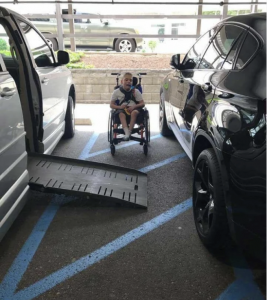
This is why you don’t park in the striped area of a handicap zone.
Mobility (or lack thereof) awareness
One of the easiest ways of identifying someone with a disability is if they are in a wheelchair or using another mobility aid such as crutches or a rollator. These would be considered visible illnesses or conditions. As a result of mobility difficulties related to lipedema, I have, in my possession, a doctor-prescribed handicap parking placard. But I am not using mobility aids (except when I twisted my knee and used crutches for a while).
Do I use the placard? Yes, sometimes I do. Not always, though.
Whenever I drive somewhere there is a calculation involved:
- Is there a parking lot where I’m going? (Or is it street parking, and how far down the street are we talking about?)
- Is there an open handicap parking spot available? (Often there aren’t enough.)
- How far from the front door is it? (Sometimes the spots are quite far from the front door. It’s like someone decided no one needs a handicap spot unless they have a wheelchair, and the wheelchair ramp is sometimes at the end of the building, quite far from the front door.)
- Are there regular spots available closer (or equally close) to the front door? (In which case I would choose one of those, so as to leave the handicap spot free for someone else.)
- To what degree am I feeling the need to park close to the front door today? (Some days are better than others.)
I can’t say anyone’s ever given me a hard time for using a handicap parking spot, but I know others who have been given a hard time, and I always worry that someone will.
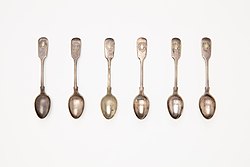
Spoon Theory
What is it? Here’s the Wikipedia definition:
Spoon theory is a metaphor describing the amount of physical or mental energy that a person has available for daily activities and tasks, and how it can become limited.
A lot of Spoon Theory articles and infographics pertain to neurodivergence. But that just means it applies to them as well as to those with other invisible illnesses. If you click here you are likely to find infographics and articles that pertains to your specific condition.
This isn’t about which diseases are “worse” than others. Even if two people have the same disease, their experience of it can be different in as many ways as they are similar.
I don’t personally use The Spoon Theory, but I think that’s mostly because I don’t have to explain myself very often to others. (“Sorry, I can’t accept your last-minute invitation; I’m down to my last spoon and that would take at least three.”)

It helps to get organized
Some invisible illnesses are temporary, and others are chronic. I once wrote a post called Organizing to De-Stress a Major or Chronic Illness. It was intended for both those who are ill, and for those who live with or care for them.
I’ve updated it a few times over the years, the last time being in 2019. Which, ironically, is around the time I was seeking my own diagnosis and not finding answers. So there may be a few outdated resources, but the major sub-topics are still good:
- Organize Your Medical Records
- Organize Your Support System
- Organize Your Home
- Organize Your Self
Hidden Disabilities Sunflower Program
The Hidden Disabilities Sunflower lanyard, cards, and pins are simple tools for voluntarily sharing that you have a disability or condition that may not be immediately apparent. The program also provides ways for public places and services to indicate that they are aware and available to help you.
Although they feature a number of disabilities on this page, the site also has an index of 912 (!!!) hidden disabilities on this page (scroll down past the form). I was just about to submit “lipedema” when I realized they DO have both lipedema and lymphedema listed under their British and Australian spellings — lipoedema and lymphoedema.
I don’t know how well this worldwide program is catching on, partly because I don’t get out much these days. But I do know the Regional Director in Canada, Clare Kumar. (I already knew about the program before she started talking about it.) She has a Facebook group called Happy Space Pod, and a podcast called Happy Space Podcast. Check them out!
Invisible illness awareness
What can you do to help? Well, for starters:
- Remember: Be kind, for everyone you meet is fighting a battle you know nothing about.
- Share this post with others.
- For more info, Google “invisible illness awareness”.
- If you see someone wearing a sunflower lanyard or pin, be patient with them if nothing else. (Surely there are people who will wear sunflowers without ever knowing this program exists, because they are pretty. Eh — might as well be kind to them, too!)
- Keep in mind that the Hidden Disabilities Sunflower program estimates that 1 in 6 people has an invisible illness. That’s a lot of people!
Do you, or someone you know, have an invisible illness?
If so, do you have any advice for the rest of us?
Please share in the comments below!
______________________________________________________
- Hazel Thornton is an author, genealogist, and retired home and office organizer.
- Book: Hung Jury: The Diary of a Menendez Juror
- Book: What’s a Photo Without the Story? How to Create Your Family Legacy
- Book: Go With the Flow! The Clutter Flow Chart Workbook
- Feel free to link directly to this post! Click here to ask about other uses.
- Copyright 2025 by Hazel Thornton, Organized for Life and Beyond
_____________________________________________________________________________
Share this:






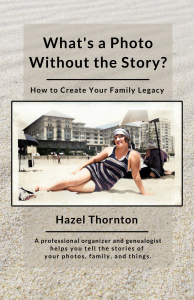
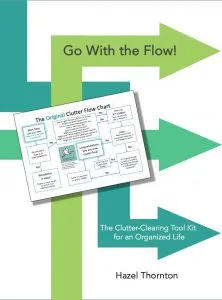

I’m so glad you wrote this post, Hazel.
At various points in my life, I’ve dealt with invisible illnesses. Some require accommodation (like a handicapped placard) but all require patience and self-advocacy, and yes, a lot of spoons.
As someone with diabetes, I have to advocate for myself in a variety of situations (like alerting people with me that yes, it’s all well and good that everyone wants to schmooze over cocktails, but I will be ordering food *now*), but it can be so much worse for others. (My friends who have T1 diabetes have to bolus for meals; that means to take short-acting insulin before eating. If you take your insulin and then the kitchen screws up and doesn’t bring your food for a long time, it can be problematic. We’ve had to cut in line at the bar to get orange juice for someone “having a low” and while it’s not ideal, I think it’s better to be seen as rude than to go into shock.) There are so many conditions that, even if they don’t LIMIT one’s abilities, they still require vigilance, which can be exhausting, especially when others assume that you’re being lazy/self-involved/pushy/precious.
It’s easy to be so wrapped up as to miss the cues that someone needs support, but it would be better if everyone assumes, exactly as you say, that “everyone you meet is fighting a battle you know nothing about.”
I love the resources you shared; I blogged about the Hidden Disabilities Sunflower Program before it was very widespread (and before Claire got involved), and am so impressed with the depth to which they go to make sure people can find their own conditions in the list. (Diabetes is listed, as well as diabetes insipidus and diabetes mellitus, but so is diabetic, an adjective-as-noun which the community tries to avoid). I’m disappointed to see that the airports in Portugal and Spain don’t participate, and that Delta is not among the member airlines.
I have been very lucky (as well as discerning in picking my physicians) that I’ve never been treated as a “WW” but I know that the medical establishment has historically not taken women or women’s illnesses seriously. (Men get pain relief for very minor things; women are often still not given pain relief for IUD insertion/removal!) I hope this post leads more people to awareness about invisible illnesses and disabilities.
Yes, “self-advocacy” is my middle name, and that alone can be exhausting! Thanks for sharing your experiences from the diabetic perspective, Julie. I, too, hope this post leads more people to awareness about invisible illnesses and disabilities, and I appreciate that you shared it.
I love this whole post. I’m very familiar with spoon theory thanks to the experiences of some people in my family. Once you know spoon theory, it really opens your eyes to what people are living with and going through. I’ve even found it nice to be able to share it with some clients who are invisible illnesses.
I’m sorry you are dealing with lipedema. You know it isn’t well understood when my typing the word here brings up red underlining, suggesting I have the word wrong. It sounds very painful and limiting, and just overall crummy. I appreciate your sharing so I can learn more about it, and hopefully be more sensitive and understanding.
As to the women’s health issues, all I can say is “preach it.” It is surprising that in 2025 so much of health care is targeted at men. I think we are doing better than we used to, but still feel we have a long way to go. The influx of female medical professionals is a step in the right direction!
Thank you for your comments, Seana!
非常感谢这篇文章!写得太棒了,让我对脂膜炎有了更深的了解。文中提到的隐形疾病意识和手杖理论尤其让我感触颇深,也更加理解了患者们的困境。这些资源非常实用,我会分享给更多人的!
Translation: Thank you so much for this article! It’s so well-written and has given me a deeper understanding of panniculitis (?). The mention of invisible illness awareness and the walking stick (?) theory in the article particularly resonated with me and helped me better understand the plight of patients. These resources are so helpful, and I’m going to share them with everyone!
Thanks so much Hazel for this post. I will share it widely. Add Rheumatoid Arthritis to your list. With newer meds, the physical deformity is less obvious but the rest of it is all there. I am like you, I only use my disabled placard on days when I absolutely need it, but have been challenged a few times that I dont look disabled (would you like me to limp for you). With the disappearance of small grocery stores and all the Mega malls , I have to factor in not only distance of parking space to door, but also how far I have to walk to get what I need in the store. And, for many reasons I am also overweight, so the looks you get and comments about well you should lose some weight are extra special. Post Covid, with the politicization of mask wearing, that is now another way hidden illnesses get attacked. I take immunosupressant drugs for my condition. Makes me susceptible to colds, flus and worse. Was at the cance clinic today for a check up wearing my mask, as was my husband. A random person walked by put her arms up and said oh no is this a stick up? I dont have any money” which was better I guess than the nasty stares or those who feel the need to lecture me about how masks don’t work. Rant over, great blog as usual, and will be sharing!
“Is this stick up?” Ugh. Very funny. Very insensitive. Speaking of stores, I haven’t shopped for groceries (or anything else much) in person since before COVID. Meaning, I have them delivered. Yes, it’s more expensive, but most regular stores (never mind big box stores) are too big for me to walk around in. I’m sorry you can relate so much to my post, Kathy, but I appreciate your adding an RA perspective!
非常感谢您分享这篇文章!它真的给了我很大的帮助,让我对脂膜炎有了更深入的了解。您提到的隐藏残疾太阳花计划也是一个非常有用的资源。我会将这篇文章分享给我的朋友和家人,以提高他们对隐形疾病的认识。
Translation: Thank you so much for sharing this article! It really helped me gain a deeper understanding of panniculitis. The Hidden Disabilities Sunflower Project you mentioned is also a very useful resource. I will share this article with my friends and family to raise awareness of invisible diseases.
Thank you for sharing your story. I wish you would still be able to get out more. I think that would be a difficult adjustment. Thank you for teaching us about your invisible disability and the significance of the sunflower lanyard. When I am working with a client and I feel something is “off”, I try to make sure they are OK. I try to ask in an open non-judgmental way so they feel they can share with me. I know it can be hard for them. They want to make sure I will not “label” them.
Hi Julie, you make a good point about clients. Sometimes they tell you what ALL their challenges are, and sometimes they don’t. And sometimes you can guess, but you might be wrong. They’re all probably used to “masking” their symptoms to a degree. But I’ll tell you what, it doesn’t take much — with a combination of symptoms — to fall behind on whatever progress you thought you could make on a project!
This article is incredibly insightful and important. It effectively highlights the challenges of living with lipedema and other invisible illnesses, fostering greater empathy and understanding. The resources provided are incredibly helpful for anyone seeking more information.
This was a very informative and empathetic article. It effectively shed light on lipedema and the challenges of invisible illnesses, emphasizing the importance of understanding and support.
This was a really eye-opening read. Its inspiring how much Hazel shares about lipedema and invisible illnesses, making me more aware and understanding. The resources are incredibly helpful!
Thank you for highlighting this. Invisible illnesses can be so tough because others don’t see what’s going on. It means so much when people take the time to understand and learn.